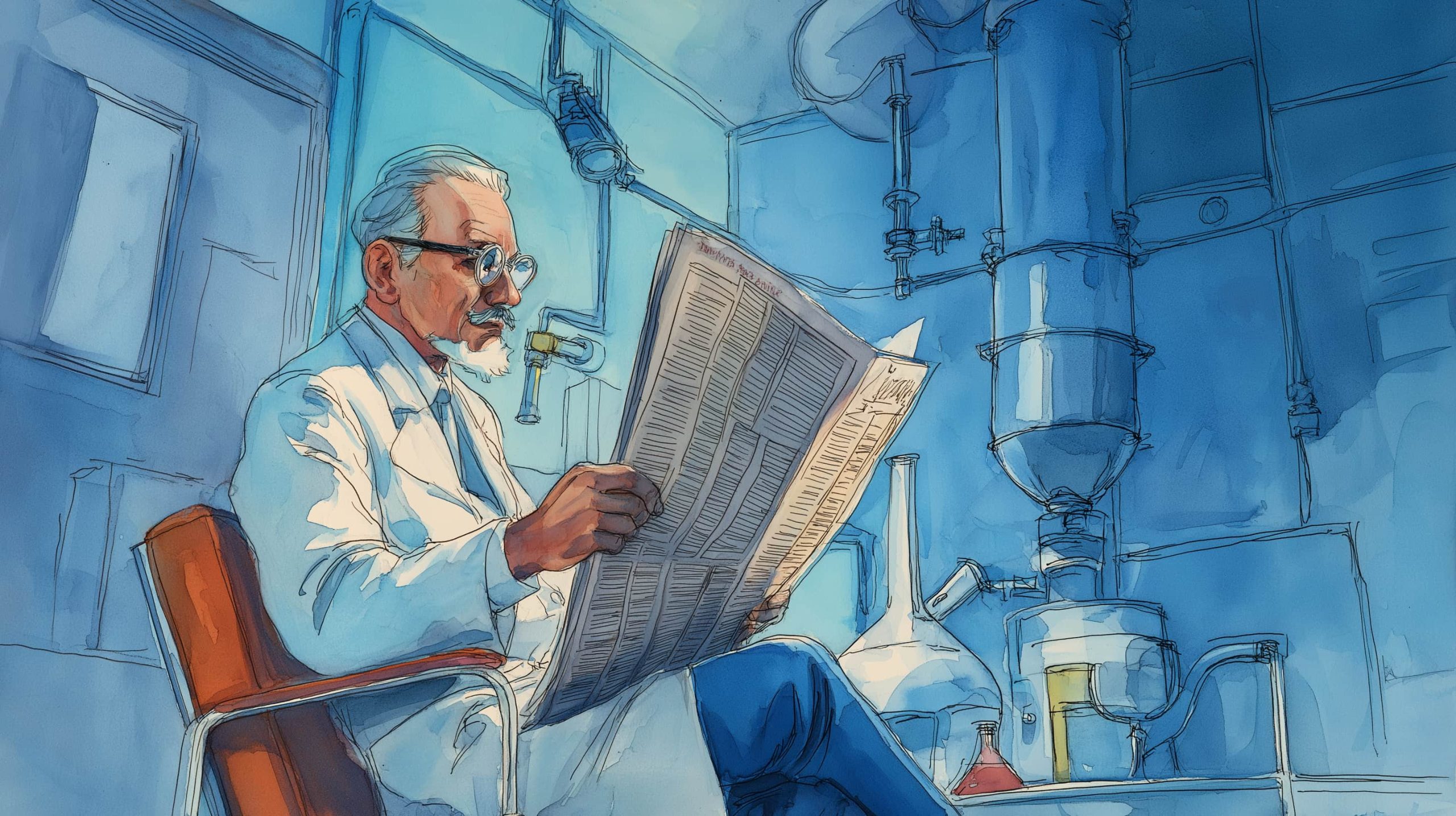Space
- Astronauts Splash Down Safely: NASA’s SpaceX Crew-10 mission returned four astronauts to Earth on Saturday after 148 days in orbit. Their Dragon capsule splashed down off the San Diego coast at 11:33 a.m. EDT on Aug. 9, carrying two NASA astronauts, one JAXA astronaut, and one Roscosmos cosmonaut [1]. Recovery ships swiftly secured the capsule, and the crew were reported in good health after medical checks. This successful splashdown concludes almost five months of scientific work on the International Space Station, ranging from microgravity experiments to spacewalks, and marks another routine – yet remarkable – round-trip to orbit.
- New Neighboring Planet?: In a stunning find, astronomers using the James Webb Space Telescope spotted a possible exoplanet orbiting Alpha Centauri A – the nearest Sun-like star to Earth, just 4 light-years away [2] [3]. The candidate planet appears to be a gas giant roughly the mass of Saturn, sitting in the star’s habitable zone (though being a hot Saturn-like world, it wouldn’t support life as we know it). Researchers managed to directly image the faint object in mid-infrared, an impressive feat given the glare from Alpha Centauri’s binary stars. “With this system being so close to us, any exoplanets found would offer our best opportunity to collect data on planetary systems other than our own,” said Dr. Charles Beichman of NASA’s Exoplanet Science Institute [4]. If confirmed, this would be the closest exoplanet ever directly imaged – effectively in our cosmic backyard – challenging planet formation models and energizing hopes of future studies by upcoming telescopes.
Climate & Environment
- Historic Wildfire Scorches France: An intense wildfire in southern France’s Aude region – one of the largest in the country since 1949 – has burned about 16,000 hectares (40,000 acres) of land since igniting last Tuesday [5]. As of Saturday Aug. 9, officials said the blaze was contained but not yet controlled, with hotspots still threatening to flare up. “The fire is contained but not controlled. We still have hot spots… until Sunday evening the fire will not be brought under control,” Colonel Christophe Magny, the regional chief firefighter, warned on French TV [6]. The fire has destroyed dozens of homes, claimed at least one life, and injured 19 firefighters and several residents [7]. French authorities have attributed the unusually ferocious fire to the effects of climate change and an ongoing heatwave in the region [8]. An orange heatwave alert – the country’s second-highest warning level – remains in effect in Aude as crews work around the clock to prevent any re-ignition. (Nearby in Greece, crews similarly battled wind-fanned wildfires earlier in the week, though those blazes were contained by the weekend after prompting emergency evacuations on Athens’ outskirts.)
- Record Muggy Summer in the U.S.: Across the Atlantic, tens of millions of Americans are experiencing an exceptionally sticky summer. An Associated Press analysis found that more than 70 million people east of the Rockies sweated through the muggiest first two months of summer on record [9]. Thanks to climate change warming the oceans and air, humidity levels have surged to tropical levels in parts of 27 states. Many cities from Washington to Philadelphia to Nashville have logged record-high overnight low temperatures, as steamier air fails to cool off after sunset [10]. “This has been a very muggy summer. The humid heat has been way up,” said meteorologist Bernadette Woods Placky of Climate Central [11]. Higher humidity means hotter nights and greater health risks, since the body can’t cool down – a fact underscored by multiple broken records for warm nighttime lows. Climate scientist Cameron Lee of Kent State noted that extremely high dew points that used to be rare are now occurring “several times a summer”, and former NOAA chief scientist Marshall Shepherd put it bluntly: today’s sweltering summers “are not your grandparents’ summers” [12]. The phenomenon is a dangerous companion to heat waves, and highlights how global warming is not just about hotter days, but also unrelenting, sweaty nights.
Health & Medicine
- New Lung Cancer Drug Triumph: The U.S. FDA granted accelerated approval to a first-of-its-kind oral treatment for a certain lung cancer on Aug. 8 [13]. Boehringer Ingelheim’s drug Hernexeos (generic name zongertinib) targets advanced non-small cell lung cancers with a specific HER2 genetic mutation. In clinical trials, this targeted therapy yielded remarkable tumor responses – about 75% of previously-treated patients saw their cancer completely disappear or significantly shrink [14]. The approval comes alongside a companion diagnostic test to identify patients with the HER2 mutation. Oncologists are hailing the drug’s potential, as it offers a much-needed option for patients who have exhausted other treatments. Hernexeos is a kinase inhibitor pill taken once daily, and while it carries some safety warnings (for possible liver, heart, and lung side effects and risks in pregnancy [15]), its benefits could be life-changing for a subset of lung cancer patients. The greenlight for Hernexeos is the latest in a string of new precision cancer therapies, and an example of how genetic insights are driving high-impact drug development.
- Sleeping Sickness Defeated in Kenya: In an encouraging global health milestone, the World Health Organization has certified Kenya as having eliminated human African trypanosomiasis (HAT) – better known as “sleeping sickness” – as a public health problem [16]. This deadly parasitic disease, spread by tsetse flies, once menaced large parts of Africa. Kenya becomes the 10th country to vanquish it, after years of sustained surveillance, insect control, and screening of at-risk communities. “I congratulate the government and people of Kenya on this landmark achievement… This is another step toward making Africa free of neglected tropical diseases,” said WHO Director-General Dr. Tedros Adhanom Ghebreyesus [17]. The last domestic case of the rhodesiense form of sleeping sickness in Kenya occurred in 2009, and only a few imported cases have been detected since 2012 – signs that transmission has been halted. Health officials stress that ongoing vigilance will continue to ensure the disease doesn’t re-emerge. The WHO’s validation is a major victory against a fatal illness that historically killed thousands, and it exemplifies how international collaboration and local efforts can beat even the most entrenched tropical diseases.
Technology & AI
OpenAI Unleashes GPT-5: A major leap in artificial intelligence made headlines as OpenAI officially released GPT-5, the newest version of the AI model behind ChatGPT. Launched on Thursday and rolled out globally, GPT-5 is being touted as a significant upgrade in reasoning and expertise. The model has 700 million+ users via ChatGPT, and aims directly at business and professional applications. OpenAI says GPT-5 can “instantaneously” generate working software code, solve advanced math problems, and provide expert-level answers on a wide range of subjects – a notable jump toward AI that behaves like a general-purpose digital expert [18] [19]. “GPT-5 is really the first time… one of our mainline models has felt like you can ask a legitimate expert, a PhD-level expert, anything,” OpenAI CEO Sam Altman said at the launch event [20]. Early demos showed the AI building a simple mobile app in minutes from just a natural-language description – a glimpse of what Altman calls “software on demand.” The release comes amid an AI arms race in the tech industry, with giants like Google, Meta, Amazon, and Microsoft pouring billions into AI development. Observers note that companies are looking for returns on these investments, and GPT-5 is geared to deliver: it’s optimized for enterprise use in coding, data analysis, and content generation at speeds and skill levels that aim to outdo its predecessors [21] [22]. While some experts urge caution – one analyst noted that “buzz won’t be enough to justify the enormous spending… enterprise adoption is key” – there’s no doubt GPT-5’s debut has upped the ante in the fast-moving AI arena. All eyes will be on whether this powerful model can live up to the hype and truly transform workflows in the coming months [23] [24].
Physics
- Clock to Hunt Dark Matter: Physicists have proposed an ingenious method to detect the universe’s most elusive substance – dark matter – using an ultra-precise “nuclear clock.” Research published this week in Physical Review X outlines how a clock based on the radioactive thorium-229 nucleus could pick up infinitesimal disturbances caused by certain dark matter particles [25] [26]. The idea is that any passing dark matter would subtly alter the nucleus’s vibration frequency (“resonance”), and a sufficiently sensitive clock could catch those tiny shifts. Recent experimental breakthroughs mean scientists can now tune a thorium nucleus’s energy transitions with unprecedented precision [27]. According to lead theorist Prof. Gilad Perez of Israel’s Weizmann Institute, a thorium-229 timepiece could be a game-changer: “When it comes to dark matter, a thorium-229-based nuclear clock would be the ultimate detector… We estimate it will enable us to detect forces 10 trillion times weaker than gravity, providing a resolution 100,000 times better than what we currently have in our search for dark matter.” [28] In other words, this proposed clock could sense incredibly faint nudges – far beyond anything current physics instruments can measure – potentially revealing waves of ultralight dark matter or other exotic physics hiding in the fabric of spacetime. While no dark matter signal has been found yet, the blueprint is energizing labs worldwide to start refining nuclear clocks. If successful, this approach would open a thrilling new window into the “dark sector” of the universe that has evaded scientists for decades [29] [30].
Biology & Biotechnology
- Turbocharging Evolution in the Lab: Scientists at Scripps Research have unveiled a breakthrough “evolution engine” that can create new proteins at speeds 100,000 times faster than in nature [31]. The system, called T7-ORACLE, is a synthetic biology platform that forces bacteria to continuously mutate target genes and select for desirable traits within each fast-paced bacterial generation. Traditional directed-evolution methods often take weeks of laborious steps for a single mutation cycle; T7-ORACLE instead runs constant hypermutation inside cells, achieving in minutes what might otherwise take months [32] [33]. “This is like giving evolution a fast-forward button,” said Dr. Peter Schultz, Scripps Research president and co-author of the study. “You can now evolve proteins continuously and precisely inside cells” without tedious manual intervention [34]. In a demonstration, the team evolved an enzyme to withstand antibiotic doses 5,000 times higher than normal in under one week – a level of drug resistance that usually only appears after years of clinical antibiotic misuse [35]. Fellow researcher Dr. Christian Diercks noted the platform “represents a major advance in continuous evolution”, compressing what used to be one generation per week into one per bacterial division [36]. The implications are far-reaching: using this turbocharged evolution machine, scientists could rapidly engineer enzymes that break down pollutants, antibodies that neutralize viruses, or proteins with new medical and industrial functions. By letting researchers “drop in any gene and evolve it toward whatever function you need,” as Diercks explained [37], such technology opens the door to solving problems that once took years – now in a matter of days. It’s evolution on overdrive, with exciting potential to revolutionize drug discovery, biotechnology, and beyond.
Sources: Connected Press Releases and News Reports from NASA; Reuters; Associated Press; World Health Organization; Xinhua; ScienceDaily; Weizmann Institute of Science; Genetic Engineering & Biotechnology News; and others [38] [39] [40] [41] [42] [43] [44] [45] [46]. Each linked citation corresponds to the original reporting of these developments between August 9–10, 2025.
References
1. www.nasa.gov, 2. www.space.com, 3. www.space.com, 4. www.space.com, 5. www.reuters.com, 6. www.reuters.com, 7. www.reuters.com, 8. www.reuters.com, 9. abcnews.go.com, 10. abcnews.go.com, 11. abcnews.go.com, 12. abcnews.go.com, 13. www.reuters.com, 14. www.reuters.com, 15. www.reuters.com, 16. www.macaubusiness.com, 17. www.macaubusiness.com, 18. ts2.tech, 19. ts2.tech, 20. www.reuters.com, 21. www.reuters.com, 22. www.reuters.com, 23. ts2.tech, 24. ts2.tech, 25. ts2.tech, 26. ts2.tech, 27. ts2.tech, 28. wis-wander.weizmann.ac.il, 29. ts2.tech, 30. ts2.tech, 31. www.genengnews.com, 32. ts2.tech, 33. ts2.tech, 34. www.genengnews.com, 35. ts2.tech, 36. www.genengnews.com, 37. ts2.tech, 38. www.nasa.gov, 39. www.space.com, 40. www.reuters.com, 41. abcnews.go.com, 42. www.reuters.com, 43. www.macaubusiness.com, 44. www.reuters.com, 45. wis-wander.weizmann.ac.il, 46. www.genengnews.com










